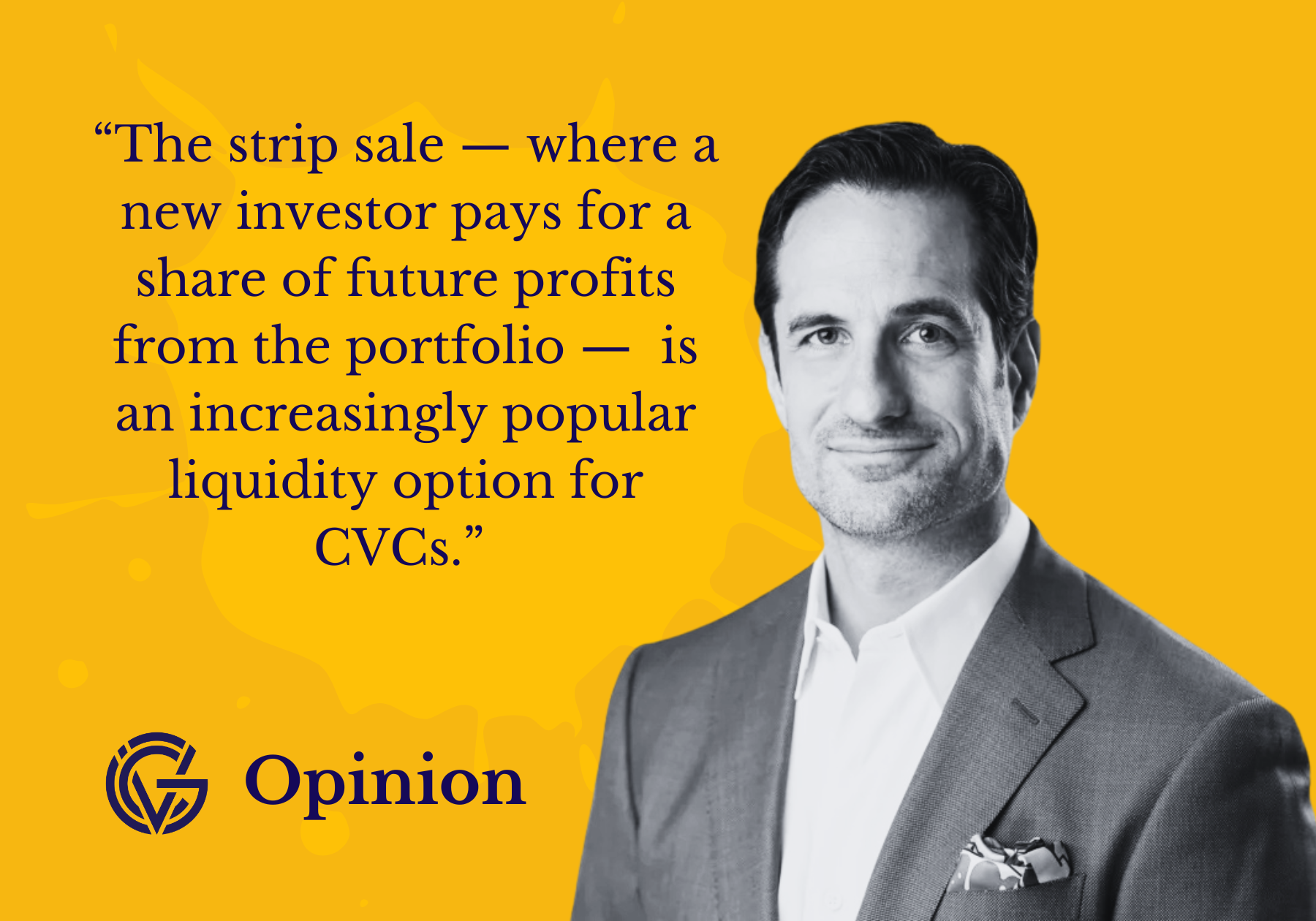The lack of exit options including M&A and initial public offerings is pushing corporate investors to sell VC assets in the growing secondary market.

Interest among CVCs seeking to offload venture investments in the secondary market is at all time high amid a dearth of M&A and initial public offerings.
“We see by far the strongest levels of interest we’ve ever seen in secondaries among CVCs,” says Laurence Levi, partner at broker-dealer VO2 Partners.
Liquidity in the secondary market is also at a record level. Secondary market funds have close to $30bn in unspent cash reserves — or “dry powder” — waiting to be invested in venture capital holdings.
The figure, provided by VO2 Partners, illustrates how liquid the market has become for the trading of VC investments.
The secondary market has become a popular way for venture investors to sell startup equity stakes, or whole portfolios of investments, to other investors, typically institutional investors and family offices, as an alternative to exiting investments through M&A or initial public offerings.
The secondary market has grown this year as new funds have entered the market, including growth-stage venture capital firm G Squared, which raised $1.1bn in August this year for a secondary market fund.
CVCs typically sell VC assets in the secondary market at a discount to net asset value. For the past two years the discount has held steady at 32% – meaning venture investors have received 68 cents on the dollar compared to the market value of the asset. That discount has decreased slightly to 30%, so that venture investors are now receiving on average 70 cents on the dollar, says Levi.
More agreement on price
Han Swildens, CEO of Industry Ventures, one of the largest funds specialising in buying corporate venture investments, says the bid-ask spread – the difference between what the seller is willing to sell an asset at and what the buyer is willing to pay for it – is collapsing.
“This means more sellers/buyers are getting agreement on price of the trades, so volume has picked up. In addition, we’re seeing more VC and growth continuation funds happening. These are typically larger transactions,” said Swildens, in an email.
CVCs that want to sell venture investments in the secondary market tend to fall into two camps, says Levi. One group is under pressure from the mothership to sell because the investments haven’t generated as much liquidity as expected.
“There’s frustration from the corporate parent that says: hey, we had an ok quarter but then we had to do this material write-down on some of our VC assets that’s dragging down our overall results in our public reporting. We need to reduce the amount of balance sheet volatility we have,” says Levi.
About half of the CVCs that VO2 Partners brokers deals with focus on conventional secondary sales, which generate upfront cash but come with the loss of portfolio company relationships and write-downs.
Other CVCs still have support from the parent corporation to do VC investments, but they want to spend less time managing older holdings that have become less relevant. In these cases, CVCs seek to do more structured sales transactions where they maintain some equity in the startup but bring in some new investors.
Levi says corporates that want to avoid to be seen backpedaling from their CVC programmes tend to turn to such structured transactions, such as so-called strip sales and preferred equity investments. These allow investors to avoid write-downs and preserve relationships with portfolio companies.
“Anecdotally, I would put maybe 25% of the CVCs we speak to into this camp,” says Levi.

Read more









